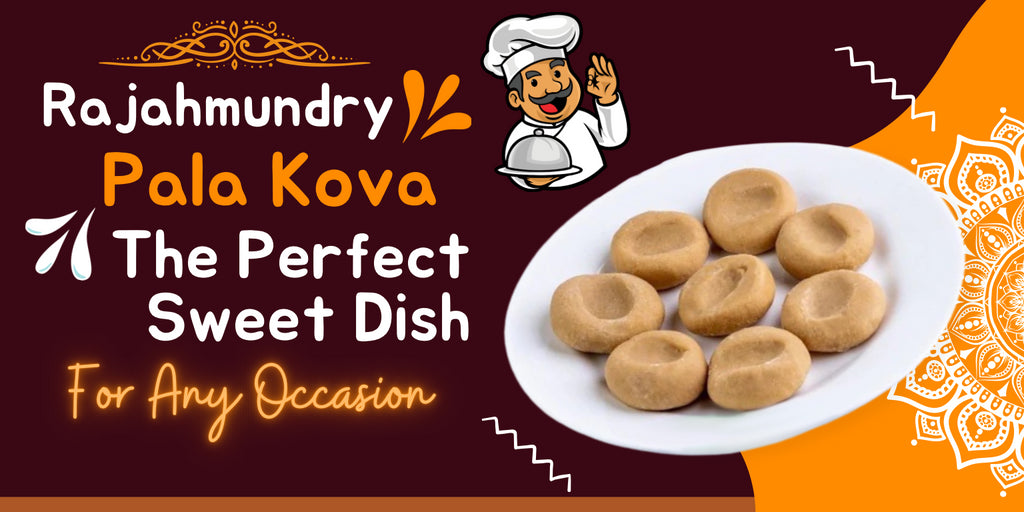Rajahmundry Pala Kova The Perfect Sweet Dish for Any Occasion
Posted by AMAN PMC

History of Pala Kova
Pala Kova is a traditional sweet dish made from condensed milk, sugar, and ghee in India. It has been enjoyed by foodies for centuries and is still popular for generations. It is believed to have originated in Rajahmundry, Andhra Pradesh.
What is Rajahmundry Pala Kova?
Traditional Indian food features some of the most delicious sweet dishes. Chandrika 'Pala khova' or 'Doodh peeda' is one such food item that will make your taste buds tingle with joy! It's a smooth, condensed milk-based sweet that is immensely popular in India for its foody goodness and melt-in-your-mouth texture. Rajahmundry's Pala Kova is one of the most beloved traditional sweets available and can be a great food choice for any occasion!
Ingredients in Pala Kova
- Sugar
- Milk
How to make Pala Kova

- Boil a litre of full-fat milk in a pan, stirring it continuously until it thickens to the desired consistency.
- Once the milk has thickened, add sugar and cardamom powder to taste for sweetness and aroma.
- Once mixed well, pour the mixture into greased pans and spread it out evenly.
- To make the pala kova extra creamy, add condensed milk to the pan and stir until it is completely incorporated into the mixture.
- Leave the mixture to cool for a few hours before cutting it into cubes or diamonds and serving it!
Are Pala Kova, and Doodh Peeda are same?
Yes, Pala Kova and Doodh Peeda are the same food item. However, they may differ slightly in terms of preparation. For instance, while doodh peeda is prepared with only milk and sugar, pala kova includes cardamom powder and condensed milk to add sweetness and flavor.
Best ways to enjoy Pala Kova

- Pala Kova can be enjoyed as it is or with other food items like vermicelli payasam, kesari bhaat, and more!
- Another way to enjoy pala kova is by making a traditional Indian dessert called shrikhand. To make this delicacy, mix the pala kova with yogurt and sugar. Top it off with nuts, fruits, and saffron for extra flavor.
- Pala Kova can also be served as a topping on pancakes or crepes to make delicious breakfast food.
- Make pala kova paratha by stuffing the mixture in rotis. You can also make pala kova nankhatai for a yummy tea-time snack.
- For those who have a sweet tooth, pala kova cake or halwa can be made by adding the mixture to baked goods and cooked desserts.
FAQs of Rajahmundry Pala Kova
Q: How long can Pala Kova be stored?
A: Pala Kova can be stored for up to a week if kept refrigerated. It is best to consume it as soon as possible for the best taste and texture.
Q: What are the health benefits of Pala Kova?
A: Pala Kova has many health benefits due to its nutrient-rich ingredients like milk, ghee, and sugar. Milk is a great source of refrigeration properly. It should be wrapped in an airtight container or plastic wrap to prevent it from getting dry and hard.
Q: What are the different ways to enjoy Pala Kova?
A: Pala Kova can be enjoyed as it is, topped on pancakes or crepes, made into parathas, shrikhand desserts, nankhatai cookies, and various cakes and halwas.
Q: Is Pala Kova vegan-friendly?
A: No, Pala Kova is not vegan-friendly as it contains milk and ghee. Vegetarians can choose dairy-free options such as soy or coconut milk if they want to enjoy this food.

